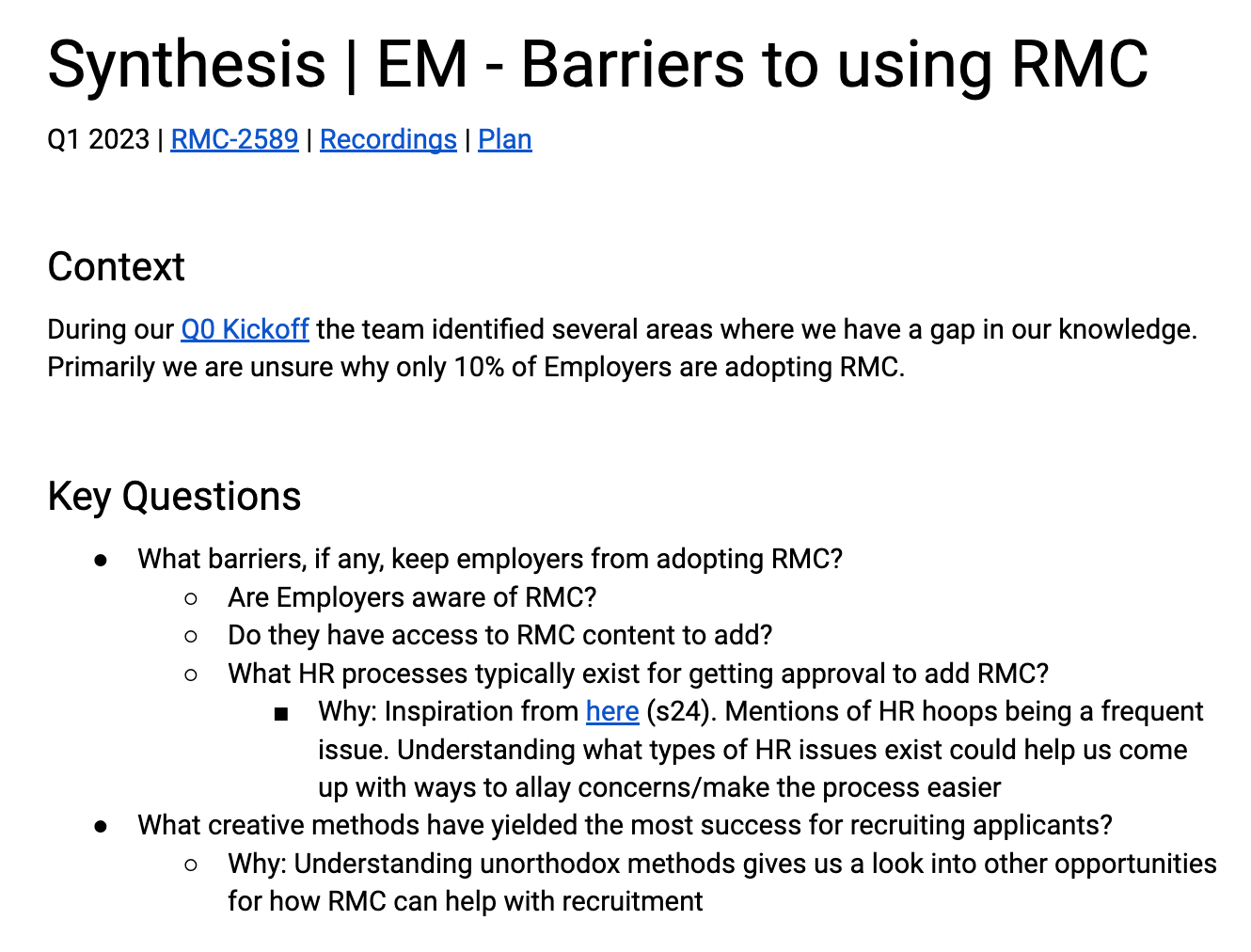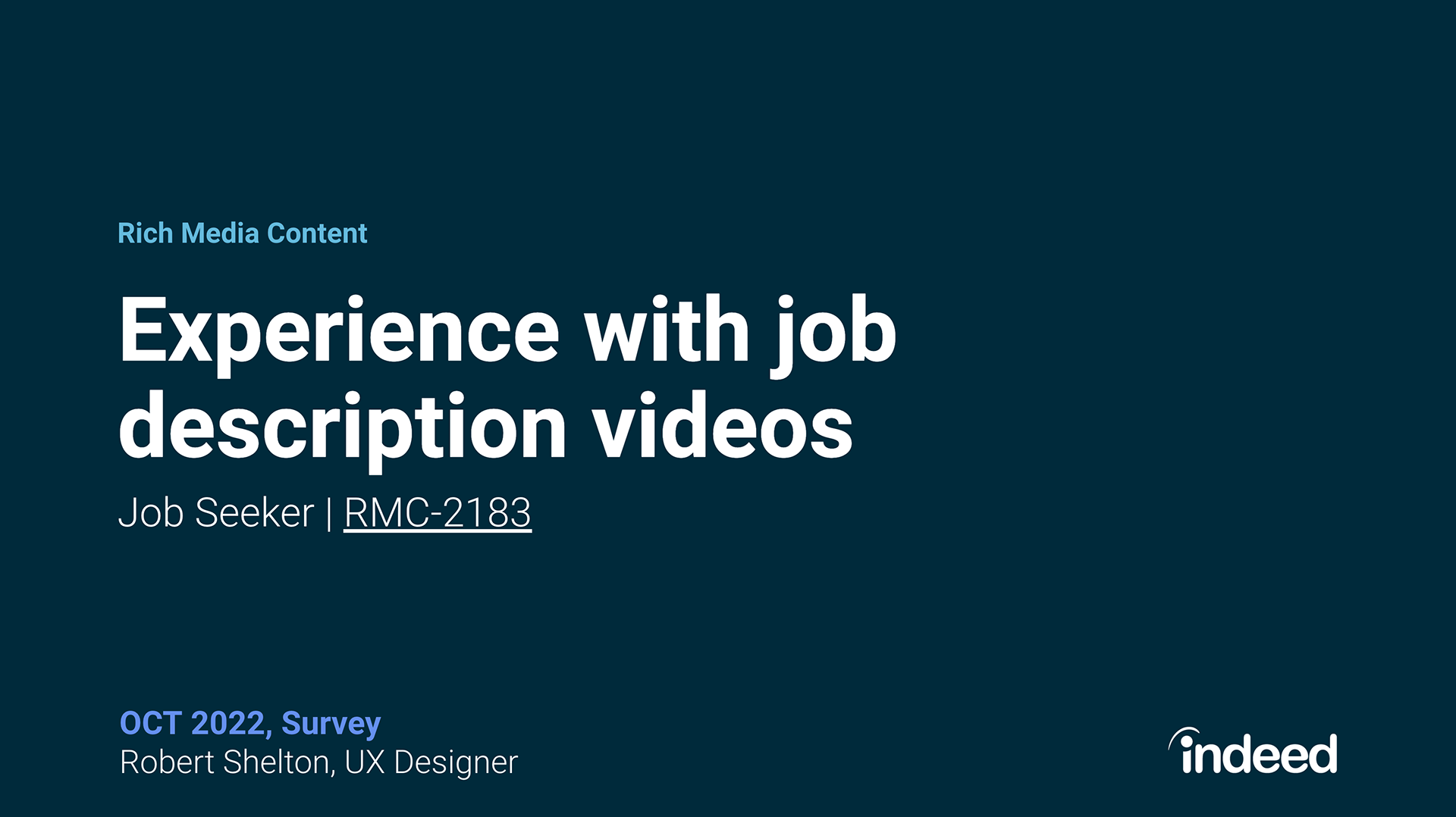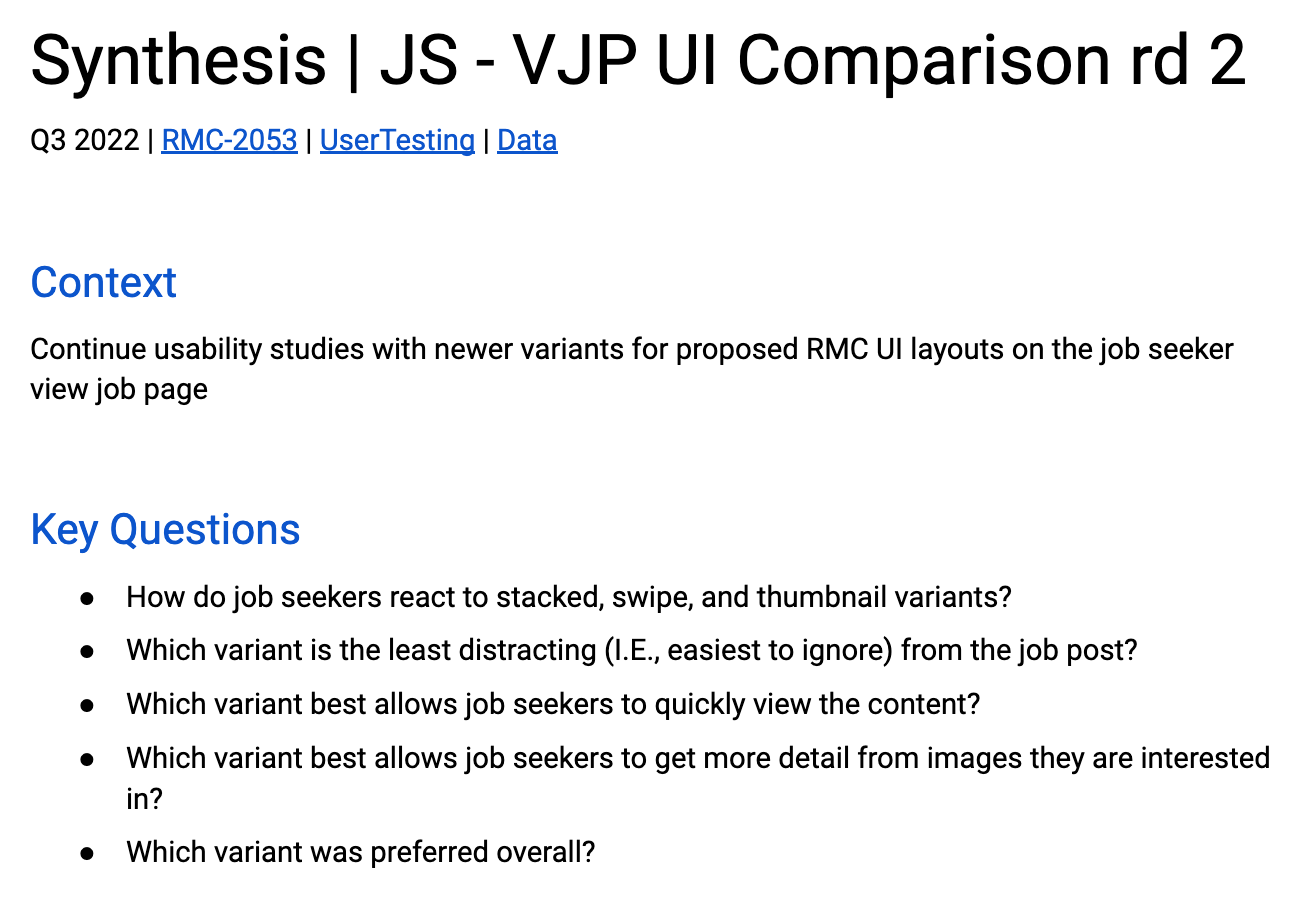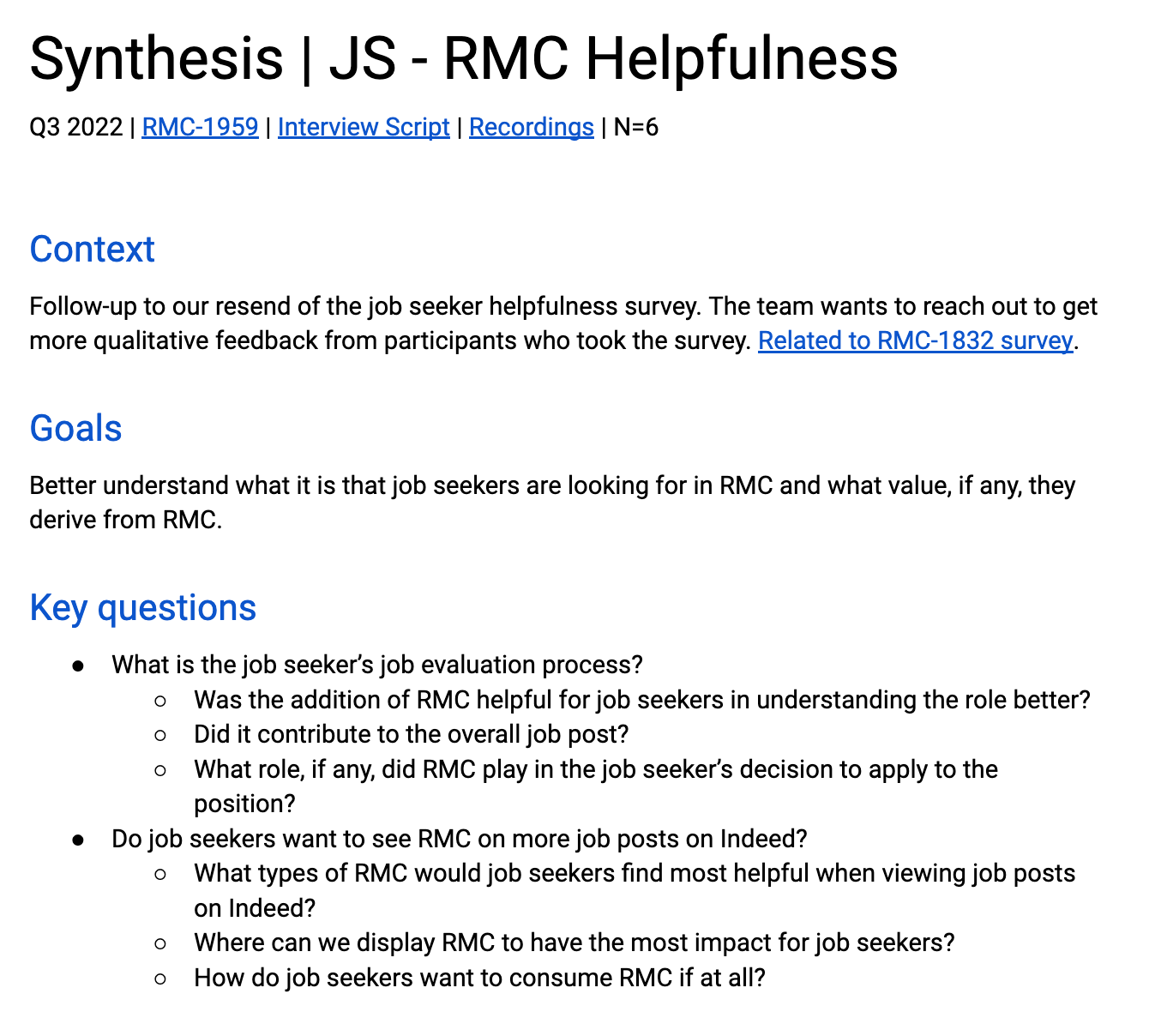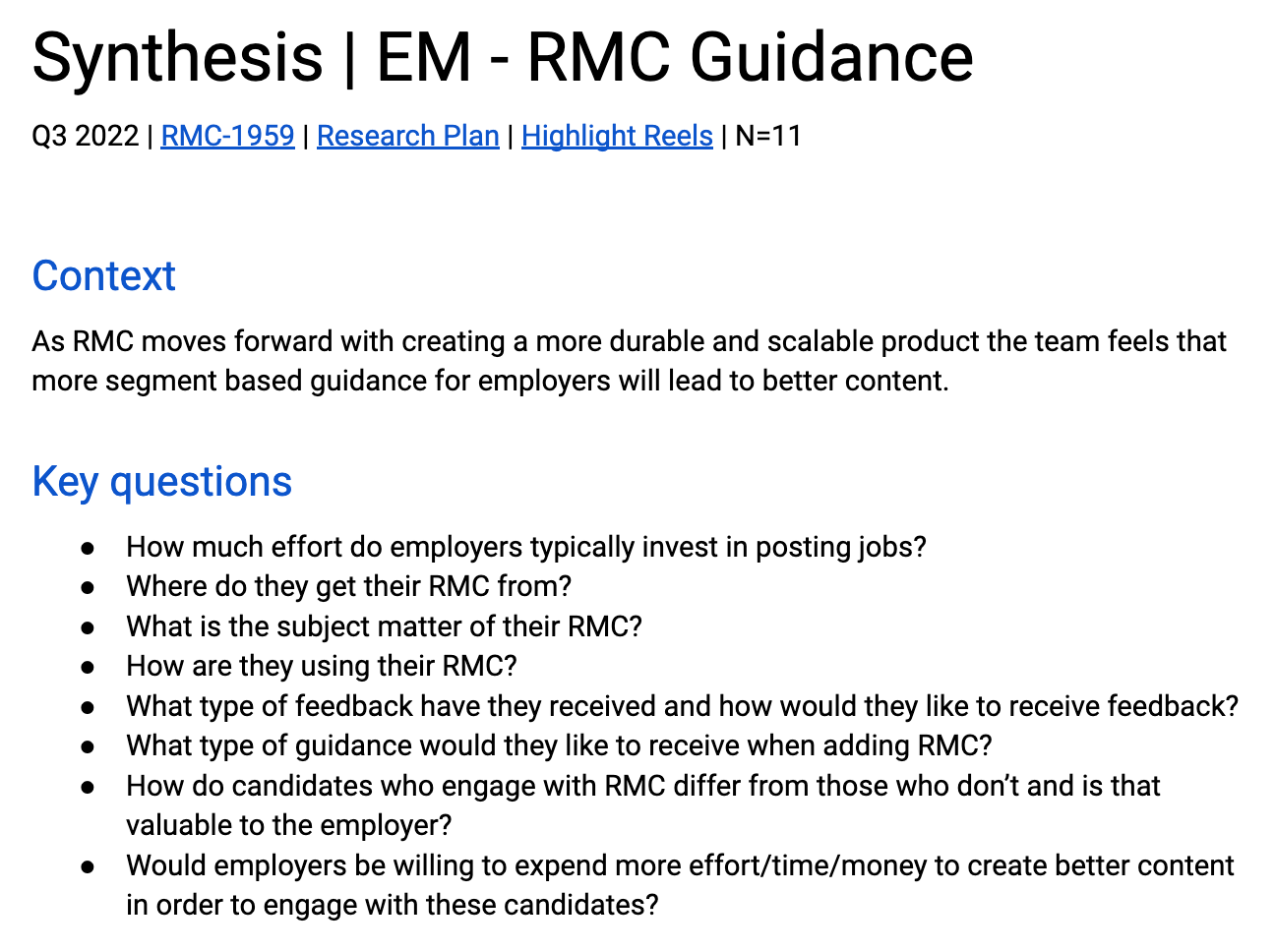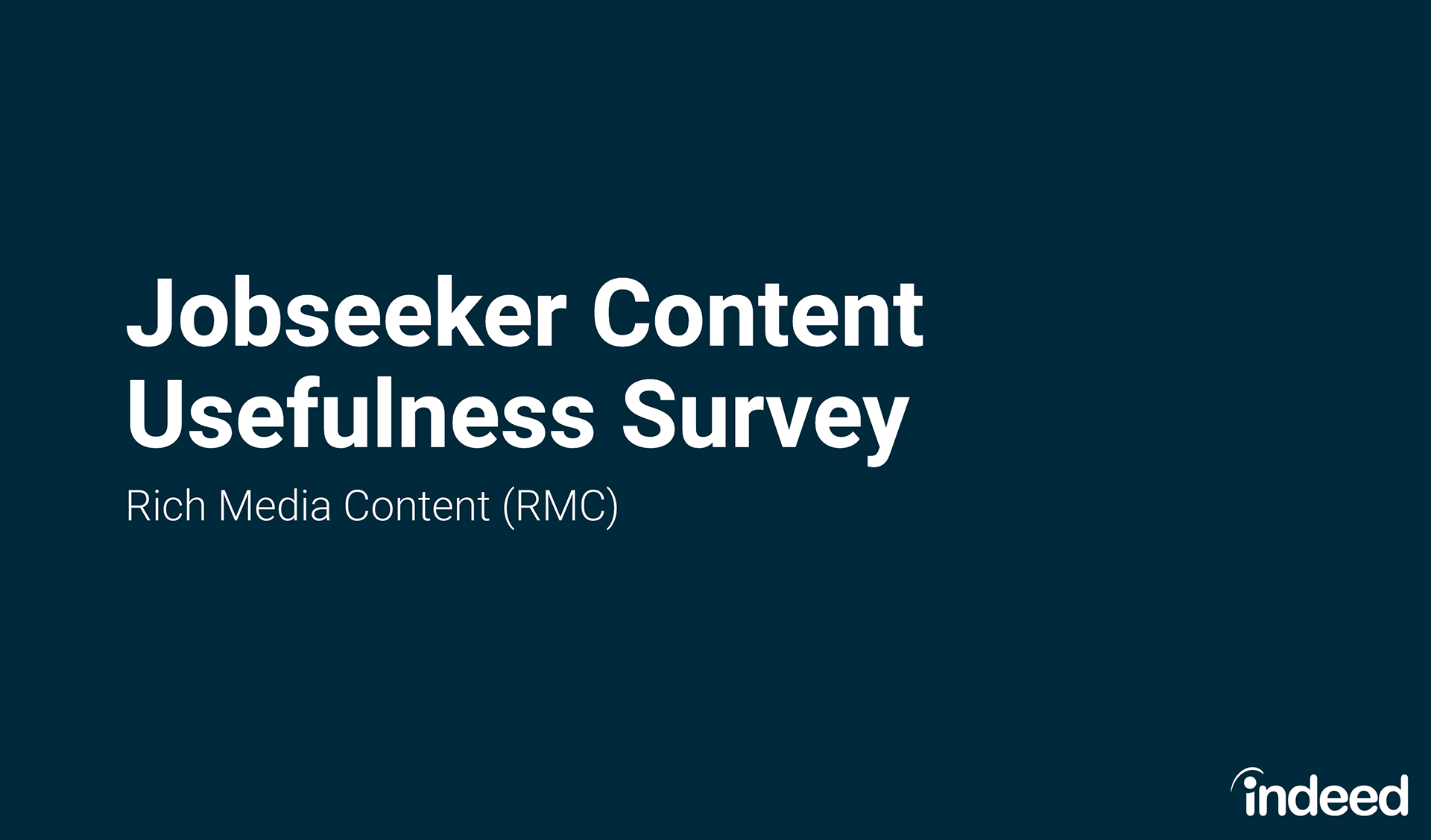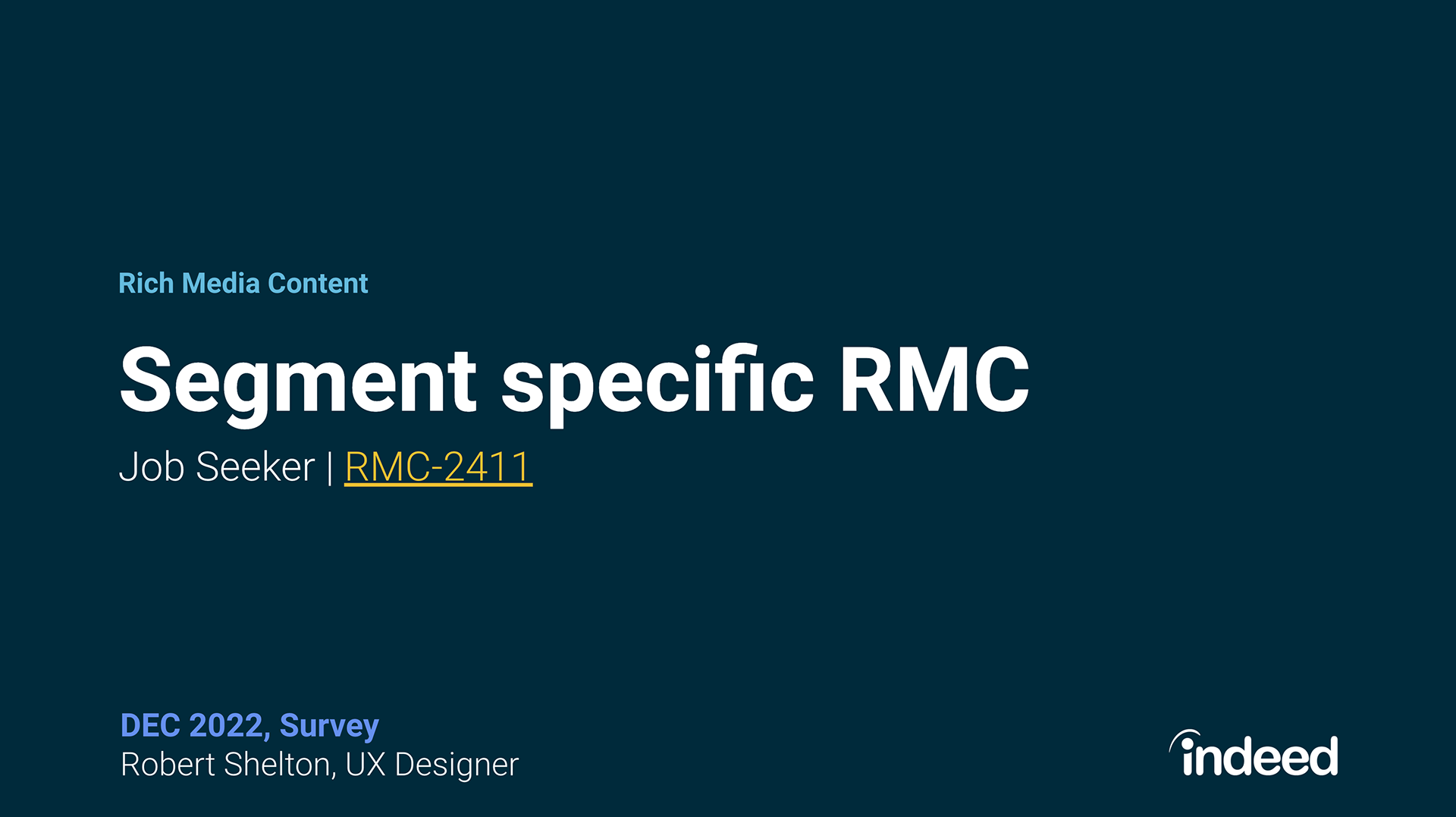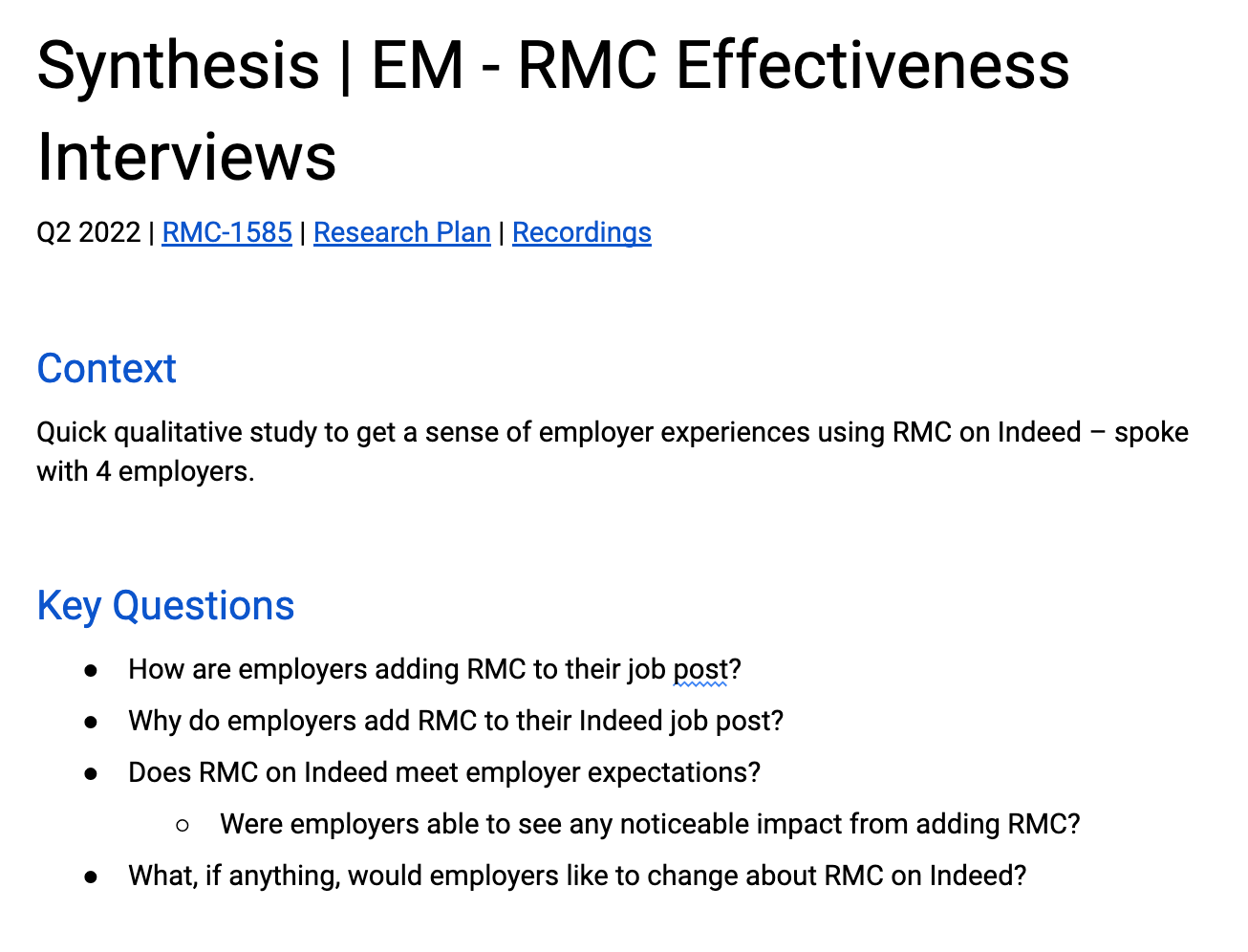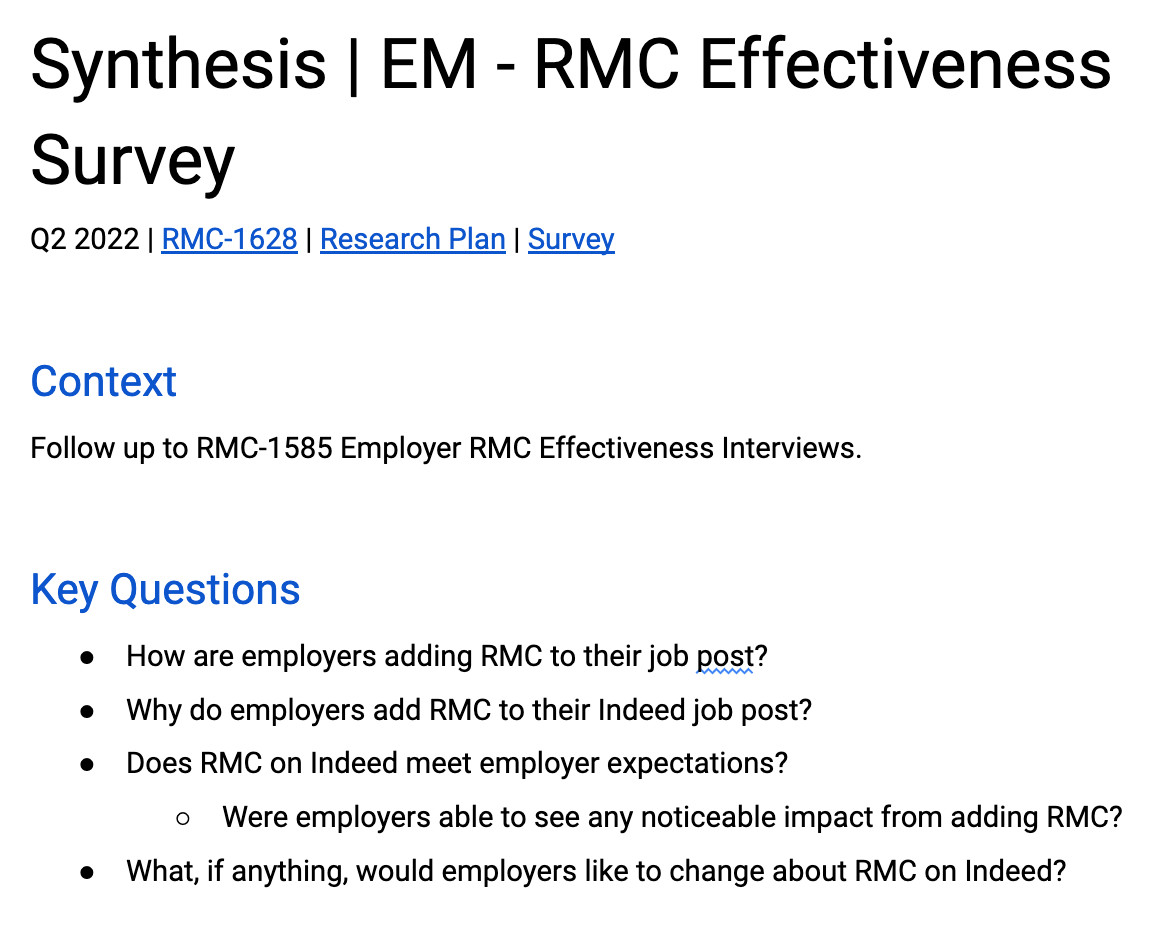Role - UX Designer & Researcher
Overview
As the sole UX resource on the Rich Media Content team, I was a driving force behind our research efforts. I initiated research projects based on team needs, creating meticulous research plans that documented top-line questions, participant qualifications, outreach email copy, and question scripts. Through collaboration with our research ops team, I expertly contacted users through email campaigns, and conducted a variety of research methods, including 1x1 interviews, surveys, and sessions through third-party sites like UserTesting.com. I then synthesized my findings into comprehensive reports and delivered impactful insights to our cross-functional team, enabling us to make data-driven decisions that led to measurable success.
Hypotheses Explored
RMC helps JS make the decision of whether they want to work there or not (enriches or replaces job description).
RMC is useful for job seekers because it allows them to self select out of a job of gives them more information to be excited about a job.
RMC is useful for employers as a differentiator from competitors.
High quality RMC will lead to "connections".
Structured and Segment based guidance can improve quality of employer generated content.
Employer adoption faces challenges due to lack of awareness and constraints on employer's time/effort.
Learnings
Conducted a team watch party using FullStory to observe job seeker behavior and identify gaps or breakdowns in experience, UI, and coding.
Findings: Among several issues with how employers were using RMC the team found that JS are not always getting to view RMC because it is so far down the page.
Conducted a user survey sent through Qualtrics (n=378). Participants were asked a series of questions revolving around their thoughts on the inclusion of RMC in job descriptions and if the RMC impacted their apply decision.
Findings: RMC related to the position helps job seekers understand the role better and has some impact on apply decisions.
Conducted both quantitative surveys (n=84) and qualitative interviews with employers to investigate how employers were using RMC to attract candidates and how, if at all, this improved their hiring process.
Findings: Most employers have access to RMC and think the ability to add RMC to a job post is beneficial for them. If the company is larger this content is typically provided to them by the company in some way. If the company is smaller, the Employer generally creates the RMC themselves. Employers are using this content as a marketing tool to help them stand out. However, Employers are not sure of the impact that RMC has on their hiring process. In interviews, Employers indicated that they are ok with RMC causing an applicant to not apply.
Followup interviews to our previous job seeker RMC helpfulness digging into job seeker's perceptions of RMC and what is considered helpful.
Findings: Job seekers look for Big 6 and personal criteria in job posts first. RMC can be helpful in evaluating a job but doesn't always factor into an apply decision if Big 6/personal criteria are met. People searching for different types of roles (blue collar vs office worker) are looking for different types of content.
I conducted an unmoderated usability session through UserTesting.com asking participants (n=10) to compare three separate UI patterns being considered for production.
Findings: Was able to quickly identify which of the 3 patterns were more preferred by participants before working with engineering to implement UI pattern into production. Usability tests also identified some discoverability issues for the team to consider as next steps.
Conducted a survey (n=157) to gauge job seeker thoughts and experiences with videos in job descriptions.
Findings: For those interested in videos, shorter videos that quickly dive into the day-to-day aspects of work would be helpful for job seekers to quickly and more thoroughly understand roles.
Moderated interviews conducted with employers who have added RMC to their job descriptions in the past. Our focus was to better understand how employers were using RMC and if they required any guidance to improve the quality of the RMC they were adding to posts.
Findings: While Employers generally have access to some form of RMC the approval process varies depending on company size. Larger companies have more red tape while Employers at smaller companies generally were the ones who had the authority to make those decisions in the first place.
I reached out to participants across two different segments (n=180) to determine where they aligned and differed in the types of RMC they would like to see.
Findings: While job seekers primarily are interested in seeing RMC related to their workspace and their specific duties, there are nuances in the specific type of content they want to see depending on their field. Early childhood educators wanted to see their class room and examples of student/teacher interaction. Welders & fabricators wanted to see their work station and the types of welds or product they'd be working on. RMC can also indicate the type of working environment candidates would be working in so they can see if the workplace is well funded, clean, organized and safe.
Interviews conducted with employers who had not used RMC in their job postings to better understand their barriers to adoption.
Findings: Employers generally have access to RMC but they don't have the time to add it. All participants were cloning/templating new jobs and had a "get in, get out" mentality. Posting a job was important but was one of many, many priorities on the Employer's plate so the less they had to do the better.
